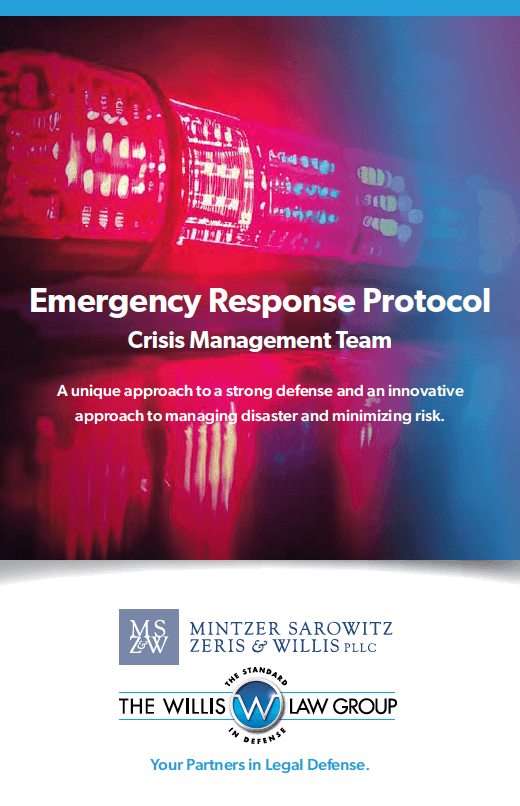How to Prepare for the Biden Vaccine Mandate
Sep 23, 2021 - News by Bradley K. Shafer
On September 9, 2021 President Biden delivered a major speech on the resurgence of the COVID pandemic. He outlined a six part plan to address it. One of those parts involves a vaccine mandate.
While Biden did not get into the details, it is believed that his directive to the Department of Labor was for an Emergency Temporary Standard (ETS) to be issued by OSHA. It is unclear as to whether or not OSHA was working on such a standard prior to the President’s speech. So it is unknown as to when this standard might be published. That said, the thought is Biden sprung this on the Labor Department with little warning. Otherwise, Biden could have already had a rule prepared and outlined its requirements in his speech.
If there is an ETS, typically it is issued with only a few days warning before it becomes effective. Because it is an emergency standard, it does not go through the rulemaking process and there will not be a period for public comment. Because of this, ETS from OSHA can only be effective for 6 months at which time the expectation is the emergency standard is replaced by a formal standard that has been through the rulemaking process with public comment periods.
There is a lot of press coverage and debate by “tv news experts” as to whether or not OSHA has the authority to issue such a standard. The answer is going to be driven by the actual wording of the standard. As we know the directive was for a standard to apply to employers with 100 employees or more. It is hard to envision a safety rule set up that way. For instance, fall protection is needed wherever there is risk of falls and falls are not limited to 100 or more employees. So, we will have to see how OSHA explains the risks of COVID transmission only exist in businesses with 100 or more employees. My thought is OSHA will make the rule universal but exempt smaller businesses from fines.
There are many questions that have yet to be answered about how this will work. We do not know what kind of test is required, but given the comments about rapid test kits to become more available at retail stores, the chance that the test is a do-it-yourself test at home as opposed to the full blown nasal swab test at a testing facility cannot be discounted. Who pays for the test is also up in the air. Is this something the employee pays through health insurance or is this an employment related exam that the employer is to pay. We do know under the FLSA all non-exempt employees must be paid for their time for testing and for vaccination time as both are now work related.
There is also some question as to what exactly the President meant with this announcement. He cannot override the exceptions given to employees to not take the vaccination for religious or disability related issues. So is his directive that employers must mandate everyone get the vaccine and only those that meet the criteria for religious or medical exemtpions get tested or is the mandate that employers require testing for everyone who chooses, for whatever reason, not to get vaccinated? Regardless, it seems that to the extent employers have not requested before, employers with 100 or more employees need to find out who is and who is not vaccinated so they know who is and who is not expected to be tested when the rule gets rolled out and becomes effective. Employers must remember that vaccination status is considered protected health information under the ADA and that information is to be kept confidential just like any other medical information an employee is required to provide.
Many other questions remain such as (1) does the rule apply to remote workers, (2) does it matter if the employer has 100 employees nationwide but only a few employees at any one location, (3) how does this relate to the obligation to negotiate vaccination/testing with the union, (4) do employees who had COVID but are not vaccinated still have to do testing, and (5) is there a poster requirement.
What is known is that a line has already formed of organizations and states waiting to sue the minute the standard is made public. ETS rules from OSHA have not fared well in the courts. According to SHRM, OSHA has only issued 9 ETS and over half had injunctions entered to delay their implementation, even if just on a temporary basis. Thus, it is likely that we will hear of the new rule and then be told it is on hold. This may also result in a delay in issuing the rule in the first place as OSHA is now on notice that it needs to be prepared to litigate not only its authority to issue the rule but also the rule itself.
As can be seen, given the low level of information available on the issue, HR is not really in a position to prepare for the rule as much as it is to prepare for the preparation to comply with the rule. Many employees will have questions and at this point, it is simply best to say something like “the government has yet to explain how this is going to work so we have no answers for you.” In the meantime, HR can do the following to get a jump on things: (1) create a process to inform employees if they are obligated to get a weekly test and how that is to be submitted and reviewed by HR for compliance; (2) create a process based upon the review of the legal requirements to escape vaccination mandates due to religious or disability related exceptions; (3) create a payroll process to compensate non-exempt employees for time spent getting tested or vaccinated; (4) create a process to receive and respond to complaints and compliance issues; and (5) be prepared to implement the rule and also to suspend implementation of the rule. Lastly, a discussion should be had in regards to receiving lawsuits. It is virtually guaranteed that as part of this process, employees somewhere will file suit against their employer seeking an injunction to stop it from implementing the new rule which they will characterize as being illegal. The only question is whether or not your company will be included in that process or not.



